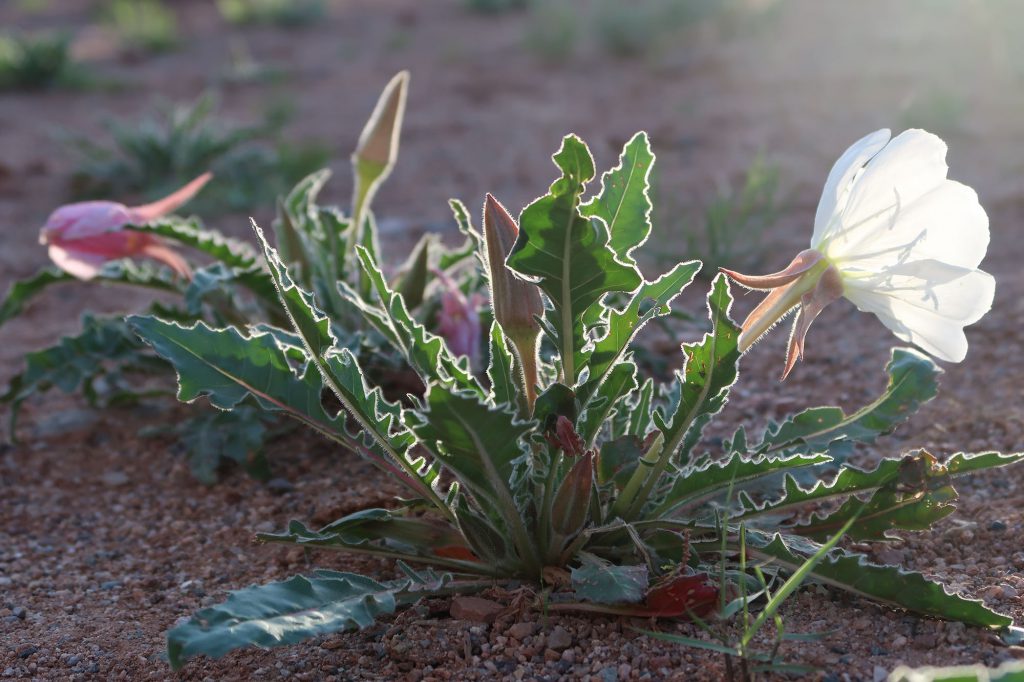May 6, 2020, Colorado National Monument
I arrived bright and early at the Eastern entrance to Colorado National Monument around 7 am. The “monument” features a collection of canyons that form the western wall of the valley containing Grand Junction.
Across town, the Sun had just begun to peek over the rim of the Eastern mesas. Its golden rays lit up the canyons I was about to hike in a stunning fashion. I can list many reasons to start a hike as early as possible—heat, safety, and better parking being the most important. But a gorgeous sunrise is perhaps the most compelling reason of all.

I parked in the small lot directly across from the Serpent’s Trail trailhead. As noted above, this requires a very early start to your day. As of early May, this move was crucial since the main lot was closed due to the ongoing COVID-19 epidemic.
The winding road up the canyon wall
The Serpent’s Trail climbs roughly 800 vertical feet along the northern edge of the first of the monument’s many small canyons. The upper and lower trailheads are separated by less than a mile. But the trail sports seemingly endless switchbacks that bring it closer to 2-miles in length (one-way) with a moderate pitch. A wide, well-packed dirt roadway forms the route. This all makes the hike great for kids and families of varying abilities who nonetheless want to “earn” some views.
The “trail” was originally an automobile roadway, opened in 1924. Its hairpin turns along the edge of No Thoroughfare Canyon quickly gained notoriety. According to park signage, early motorists often needed to drive the road backwards to guarantee gas would flow into their engines.

sniI took off up the route treated to increasingly expansive views of massive red rock formations. It blew my mind that just an hour or two east of here were high alpine snowfields and lush pine forests. Colorado is a state of dramatic transitions, going from Kansas, to the Rocky Mountains, to Southern Utah in just a few hundred miles.

Colorful Colorado
Colorado literally means “colored red” in Spanish. The term originally applied to the Colorado River. But it’s these rock formations in the Western reaches of the state that in fact endow the river with that appearance. In any event, what an incredibly appropriate name!
I visited this national “monument” in early May, and this turned out to be excellent timing. The desert had come to life with colorful spring blooms. The variety of flora in such an arid landscape really surprised me.


Cars Land
Whereas the Serpent’s Trail no longer allows automobile traffic, it’s modern predecessor, Rim Rock Drive, still winds its way up No-Thoroughfare Canyon and onto the park’s upper crest. This modern approach runs beneath the trail, including a tunnel directly under the final switchbacks. The yellow-striped asphalt snaking its way through the canyon easily brings to mind Pixar’s fictional landscape of “Radiator Springs” from the movie Cars.

At the top of this hike, the Serpent’s trail meets up with the modern roadway. In theory, a driver could then meet you there to spare your legs the 800 vertical foot descent. But it’s such a lovely hike back down anyways.

After descending back towards the car park, I spent the better chunk of my day continuing to explore the monument. This included two more hikes from the same location (Devil’s Kitchen and No Thoroughfare Canyon Trail) and a nice midday drive along Rim Rock Drive to check out the Coke Ovens. Overall, it was a great experience!

